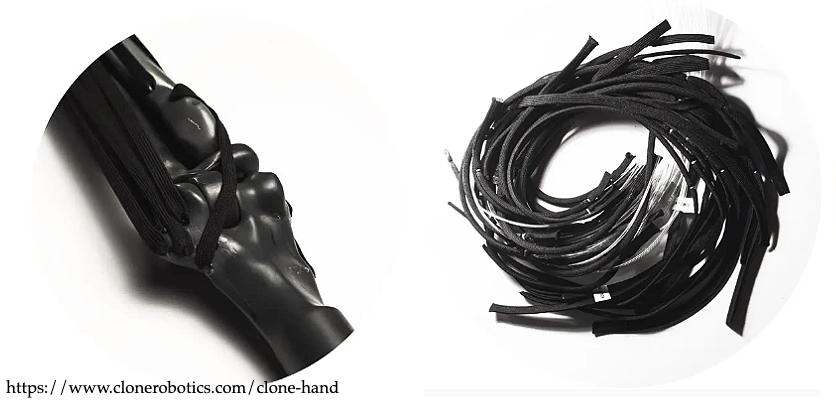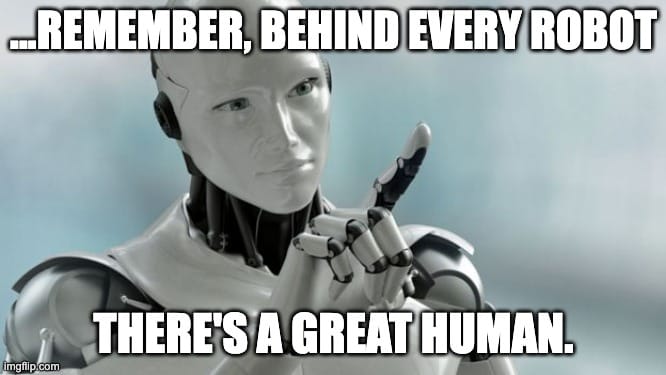In the rapidly advancing world of robotics, few companies have made as significant an impact as Clone Robotics. With a mission to revolutionize the way we approach humanoid tasks, this innovative startup has developed a synthetic hand that not only mimics the human hand with uncanny precision but also brings affordability to the forefront of robotic technology.
As industries across the globe seek more efficient solutions for tasks ranging from factory work to household chores, Clone Robotics stands at the cusp of a new era in automation.
Their latest achievement, the 18th iteration of the Clone Hand, showcases remarkable advancements in both design and functionality.
With artificial bones, ligaments, and muscles, this hand offers 27 degrees of freedom and can grip up to 15 pounds, all for a production cost of just $2,800. These features, combined with durable materials like carbon fiber and soft muscle-like components controlled by hydraulics, mark a significant leap towards creating life-like, versatile robotic limbs.
| Feature | Description |
|---|---|
| Degrees of Freedom | 27 |
| Grip Strength | Up to 15 pounds |
| Production Cost | $2,800 |
| Materials | Carbon fiber for bones; soft muscle-like components controlled by hydraulics |
| Key Advancements | Combines durable materials with advanced design for life-like, versatile robotic limbs |
But what sets Clone Robotics apart is not just their technological prowess. The company’s vision extends beyond mere mechanical mimicry. By integrating adaptive AI—a type of artificial intelligence that can modify its behavior and improve its performance by learning from new data and experiences—they are paving the way for robots that can seamlessly transition between different roles, enhancing their utility and adaptability.
The future Clone Robotics is building—one where humanoid robots are not just a dream but an accessible reality for all—puts these “flesh and bone” robots closer to home than we may have imagined.
And speaking of robots and reality, let’s appreciate their approach: by giving up “The Ghost in the Machine” for a flesh-and-bone handshake. If you haven’t read “The Ghost in the Machine,” you might miss why your smart vacuum seems to have a mind of its own. Trust me, it’s not just dirt it’s hunting for!
The Evolution of the Clone Hand
Clone Robotics is not exactly a newcomer to the scene of robotic hands. Their journey began in the early 2000s, fueled by a dream of robots that could truly mimic human dexterity, without needing a genius to operate them.

Early Struggles & Iterations
Clone Robotics faced significant challenges in the early stages of their development. A primary hurdle was understanding the complex movements of the human hand, which required meticulous study and replication of its intricate motions.
Another challenge was finding materials that could accurately mimic the strength and flexibility of human bones and muscles. Their early prototype humorously illustrated these difficulties, as it could wave like a friendly neighbor but was unable to grasp a coffee cup.
Despite these setbacks, the team continued to show improvements and breakthroughs. Each iteration addressed previous shortcomings, leading to More Degrees of Freedom; early versions had just 5 degrees of freedom, allowing for limited movement. Later versions significantly improved this capability.
Current Iteration
Today we have the 18th iteration of the Clone Hand. With now 27 degrees of freedom, making it one of the most dexterous robotic hands on the market. But what really sets it apart is its cost-effective production process, making it accessible to a wider range of industries and applications.
This latest iteration of their work, now features an incredible advancement all around
| Specification | Value |
|---|---|
| Degrees of Freedom | 24 |
| McKibben Muscles | 37 |
| Battery Life | 2 hours |
| Operational Load | 7 kg |
| Total Length | 0.55 m |
| Total Weight | 0.75 kg |
One of the most remarkable achievements of the Clone Hand is its cost-efficiency. With material cost at just $2,800 (about a thousand lower than retail cost of apple vision pro), this robotic hand may offer an affordable solution.
The use of carbon fiber (the superhero of materials) for the artificial bones ensures both strength and durability while keeping production costs low. Additionally, the 37 McKibben muscles, made from soft materials and controlled by a sophisticated hydraulic system, can withstand up to 650,000 cycles of expansion and contraction, demonstrating remarkable endurance. You could say it’s more reliable than a politician’s handshake! 😏🤝
McKibben what??
McKibben muscles, also called artificial muscles, are like special balloons inside a strong, flexible sleeve. When you pump air into these balloons, they expand and get shorter, just like how your muscles get shorter and thicker when you flex your arm. This makes them perfect for robots because they can help the robot move in a way that's very similar to how our muscles work. When the air is let out, the muscles go back to their original shape, ready to move again. These artificial muscles are used in robots to help them pick things up, move their arms and legs, and even help people who need prosthetic limbs. They're light and powerful, making them great for creating lifelike movements. Imagine a robot that can move its arm gently to pick up an egg without breaking it – that's what McKibben muscles can help do!
Performance and Durability: The Numbers Game
So, just how well does the Clone Hand perform? With its hydraulic muscle control, the Clone Hand can withstand an impressive 650,000 cycles before showing any signs of fatigue. That's like doing 1,000 hours of yoga without breaking a sweat 💪😮💨.
But what about grip strength? Can the Clone Hand give you a firm handshake or a crushing grip? The answer is a resounding "yes!"
Thanks to its advanced engineering, the Clone Hand’s grip strength is not only powerful but also precise. This allows it to perform delicate tasks, such as handling fragile objects without causing damage, and exerting enough force for tasks that require a stronger grip. Whether it’s gently holding a test tube in a laboratory or firmly gripping a tool in a workshop, the Clone Hand shows potential for an impressive range of applications.
With a grip capability of up to 15 pounds, the Clone Hand can handle even the most demanding tasks. Whether you're a surgeon or a coffee connoisseur, the Clone Hand's got you covered.

The Clone Hand's technological innovations are a good show of the power of engineering and design. With its carbon fiber skeleton, artificial bones, and hydraulic muscle control, this robotic hand is the real deal. So, the next time you're tempted to give your robotic hand the cold shoulder, remember: it's not just a hand. It's a work of art.
The Clone Hand's potential applications are endless. In the cleaning industry, the Clone Hand could revolutionize the way we clean surfaces, making it faster, more efficient. In factories, the Clone Hand could take on tasks that are currently too dangerous for humans, freeing up workers to focus on more complex and creative tasks. In healthcare, the Clone Hand could assist in surgeries, provide support for patients with disabilities, or even help with tasks such as wound care. The Clone Hand's impact will be felt across a wide range of industries.
Conclusion
In a world where the line between science fiction and reality is increasingly blurred, Clone Robotics exemplifies the transformative potential of affordable humanoid robotics. I know I will be sure to follow Clone Robotics’ journey and the broader field of humanoid robotics.




